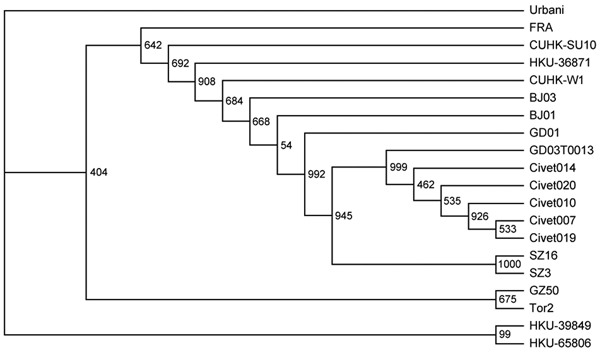Volume 11, Number 12—December 2005
Research
SARS-CoV Infection in a Restaurant from Palm Civet
Figure

Figure. Phylogenetic relationships of severe acute respiratory syndrome (SARS) virus isolates based on the spike gene. The neighbor-joining tree was constructed by the neighbor-joining process with 1,000 bootstrap replicates. The origins of the sequences are as follows: Civet007, Civet010, Civet019, Civet020, and Civet014, palm civets from the restaurant; GD03T0013, the first SARS patient in 2004; SZ3 and SZ16, palm civets from a Shenzhen market in 2003; GZ60, HGZ8L1-A, ZS-A, ZS-B, ZS-C, and GD01, early phase isolates in 2003 without the 29-nucleotide (nt) deletion; GZ02, HSZ-Bb, HSZ-Bc, HSZ-Cb, and HSZ-Cc, early phase isolates from the 2003 epidemic with an 82-nt deletion; GZ50, HKU-36871, HKU-39849, HKU-65806, CUHK-W1, CUHK-Su10, BJ01, BJ03, Fra, Tor2, and Urbani, middle and late phase isolates from the 2003 epidemic.
1These authors contributed equally to this article.